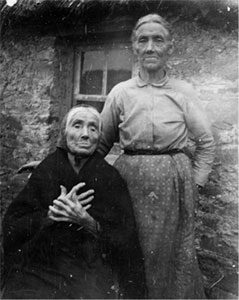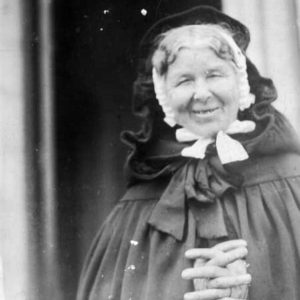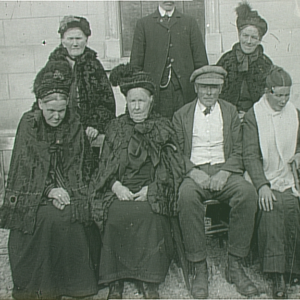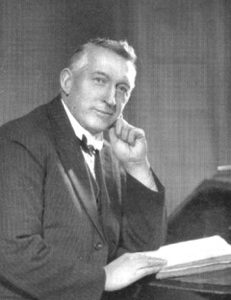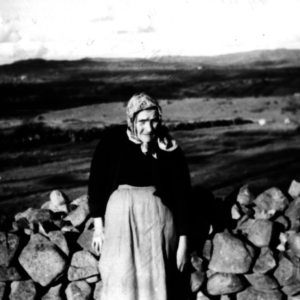Source Musicians
‘The artistic and creative linguistic voice of a people was silenced within a few generations: the inter generational continuity of Gaelic oral arts was arrested and an insidious form of cultural memory loss crept in.’
A Hidden Ulster
The rapid decline of Irish as a community language, towards the end of the 19th century, and with it the loss of oral traditions of ritual, place names, seasonal customs, songs, story, music and lore, was not unique to Oriel. What was unique was the extent to which collectors gravitated towards this area at the turn of the 20th century, and whose varied interests in music, language, technology, photography, song, dance music, literary and music manuscript, ensured the survival of some of its traditions, at least on paper.
There are many reasons why spoken Irish was abandoned in a relatively short period of time and within living memory in southeast Ulster, not least the effects of the Great Famine (1845-47), ensuing poverty, church and state hostility – leaving entire communities with only a vague memory of the language and traditions of their grandparents, and causing a breakdown of communication between generations, often between parent and child, and with it a significant loss of ancestral memory.
Collectors and Singers

Brian Ó Baoghaill, Omeath c. 1915. Photo: Peadar Ó Dubhda © A Hidden Ulster & Oriel Arts 2017
The collectors arrived at the tail end of the transmission of the Gaelic oral traditions. However, the result of their labours, found in disparate sources throughout libraries, archives, private collections and newspaper, was sufficient to recreate elements of a once vibrant local tradition.
The source singers and storytellers were elderly, and many of them unwilling and afraid to speak Irish to their children, and so they were the last custodians of an ancient linguistic, song and literary tradition.
The collectors went, mainly, to Omeath in County Louth, south Armagh around Mullaghban, Dromintee, Killeavy and Crossmaglen, and around Donaghmoyne and Lisdoonan in County Monaghan. In many instances, the names of source singers and storytellers are given.
Brighid Ní Chaslaigh from Omeath can be heard below counting to twenty, in native Omeath Irish in 1931, as part of the Wilhelm Doegan linguistic recording project
Most of these photographs were taken by Peadar Ó Dubhda, a folklore collector from County Louth, and reproduced for A Hidden Ulster from old glass plates. Extensive biographical detail on singers and collectors, poets and harpers is given in the PEOPLE section of A Hidden Ulster (pp. 357-416 with references and sources).

Máire Learaidhe O’Hanlon with collector and photographer, Peadar Ó Dubhda c. 1912. Copyright ORIEL ARTS
Collectors and instrumental music
In the appendixes of A Hidden Ulster are extensive accounts of song and music manuscript collections. These were written down in music notation by collectors, scribes and musicians from 1817 onward, and were collected from Oriel musicians – mainly fiddlers and pipers around Crossmaglen and Dromintee. Some of this material has survived on phonograph recordings now in the National Folklore Collection in UCD.
Harp music from Oriel musicians was mainly collected by Edward Bunting from 1792-1840 and written down in music notation. The source musicians mainly came from Counties Armagh and Louth. In some instances their names are given. See COLLECTIONS and HARP IN ORIEL
Click on each photograph to enlarge.
Oriel Arts © CÉ 2019
- Máire Ní Arbhasaigh and her mother Máire Uí Arbhasaigh (AHU pp.391-2) Recording of her 1931 reciting a Carolan song below: https://www.doegen.ie/LA_1225d2
- Omeath fiddler c. 1912 © Oriel Arts & A Hidden Ulster 2017
- Singer: Frank Wings Campbell Forkhill Co. Armagh (AHU p. 304) c.1950 © National Folklore Collection UCD with kind permission
- Máire Learaidhe O’Hanlon, Omeath (AHU p. 411) & Collector/Photographer Peadar Ó Dubhda.(AHU pp.370-2) © A Hidden Ulster & Oriel Arts
- Dancer at Omeath Feis 1912. © A Hidden Ulster & Oriel Arts 2017
- Singer: Mrs McCabe Mullaghban, Co. Armagh (AHU p. 409) © A Hidden Ulster & Oriel Arts 2017
- Malsha Byrne Forkhill © A Hidden Ulster @ Oriel Arts 2017
- Keening woman: Maighréad Mhodartha Kelly, Carrickasticken (AHU pp.398-9)© A Hidden Ulster & Oriel Arts 2017
- Singer: Bríd Ní Chaslaigh Omeath c. 1912 (AHU p. 405) © A Hidden Ulster & Oriel Arts 2017
- Collector & Musician Luke Donnellan (AHU pp. 361-3) © National Folklore Collection UCD
- Collector Lorcán Ó Muirí. (AHU pp. 358-60) © A Hidden Ulster @ Oriel Arts 2017
- Brian Ó Baoghaill, Omeath c. 1915. Photo: Peadar Ó Dubhda © A Hidden Ulster & Oriel Arts 2017
- Singers and Storytellers Omeath c. 1912 © A Hidden Ulster & Oriel Arts 2017
- Collector: Enrí Ó Muiríosa (AHU pp.363-5) © A Hidden Ulster & Oriel Arts 2017
- Storyteller: Mary Nugent Dromintee c.1940. © A Hidden Ulster & Oriel Arts 2017
- Singer: Cití Sheáin McGivern or Nancy Caulfield Omeath c.1912 (AHU p. 407) © A Hidden Ulster & Oriel Arts 2017
- Last native Irish speaker in Oriel: Anna O’Hanlon Omeath (AHU p. 413) © National Folklore Collection UCD with kind permission
- Storyteller & Singer: Mícheál McArdle , Omeath (AHU p. 408) © A Hidden Ulster & Oriel Arts 2017
- Singer: Cití Sheáin Dobbins, Omeath Co Louth (AHU p.403-4). ©Oriel Arts & A Hidden Ulster 2017

